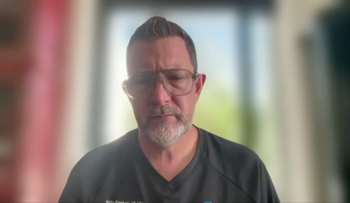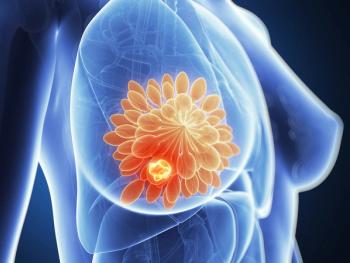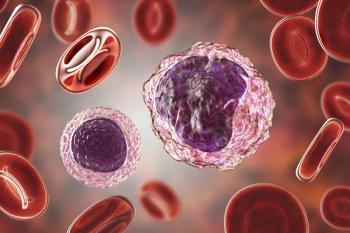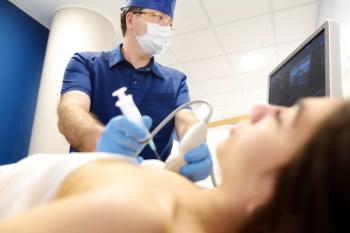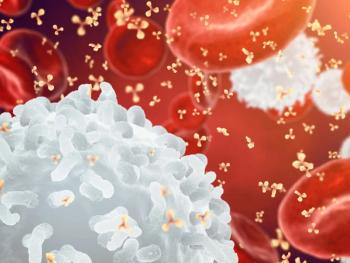
Radical Prostatectomy Linked to Lower GU Toxicity in Localized Prostate Cancer
Toxicity complications were assessed between single- and multiple-treatment modalities for patients with localized prostate cancer.
Radical prostatectomy was found to have lesser toxicity compared with the combination modalities for patients undergoing localized therapy for prostate cancer, according to results presented at the
Of the 47,387 patients enrolled, 39.7% experienced a genitourinary complication during the specific period. The most common included urinary incontinence (11.7%), kidney failure (8.8%), bladder disorder (2.9%), and cystitis (2.3%).
Additionally, genitourinary complications were linked to the type of procedure patients received. This included bladder (7.0%), rectal (4.6%), prostate (3.3%), and urethra (2.9%).
Of note, with the Kaplan-Meier assessment, the investigators found that the risk of genitourinary complications was significantly different by modality (log-rank test P < .001). Radical prostatectomy and brachytherapy were found to have the lowest risk of toxicity.
“In the long term, radical prostatectomy likely incurs the least risk while combination modalities pose the highest risk independent of patient age and cancer stage,” the study authors wrote in the presentation.
The median patient age at diagnosis was 66 years, and during treatment, the median age was 67 years. The median follow-up was 70 months. At diagnosis, 11% of patients had stage I disease, 58% had stage II, 14% had stage III, and 13% had stage IV.
Treatment modalities included radical prostatectomy (23%), external beam radiotherapy (EBRT; 24%), brachytherapy (4.8%), radical prostatectomy plus EBRT (4.3%), cryotherapy (1.7%), EBRT plus brachytherapy (1.4%), medical therapy plus observation (0.4%), and EBRT plus cryotherapy (0.2%).
The authors noted there was a significant difference by modality between the cumulative incidence of upper tract morbidity and lower tract morbidity (log-rank test P < .001).
The multivariate Cox regression model for predicting complications found age (HR, 1.03; 95% CI, 1.03-1.03; P < .001), stage I disease (reference), stage II disease (HR, 1.14), stage III disease (HR, 1.24), and stage IV disease (HR, 1.97). Treatment modality of radical prostatectomy (reference), cryotherapy (HR, 1.17; 95% CI, 1.04-1.32), EBRT (HR, 1.22; 95% CI, 1.15-1.28), EBRT plus brachytherapy (HR, 1.10; 95% CI, 0.91-1.32), cryotherapy plus radiation therapy (HR, 2.00; 95% CI, 1.45-2.75), surgery plus radiation therapy (HR, 1.56; 95% CI, 1.45-1.69), and medical/observation (HR, 1.47; 95% CI, 1.39-1.55) were all assessed (P <.001).
Additional genitourinary complications after prostate cancer treatment included urethral complications (1.8%), hydronephrosis (1.5%), bladder-neck obstruction (1.1%), calculus of the lower urinary tract (1.0%), sexual dysfunction (0.9%), prostatic complication (0.7%), testicular complication (0.4%), hematuria (0.1%), and pyelonephritis (0.1%).
Complications by procedure also included bladder neck (1.5%), surgically reconstructed urinary tract (0.3%), scrotum (0.2%), and ureter (0.1%).
The authors created this study to assess the long-term genitourinary complications for patients with prostate cancer, as they are rarely reported. The objective was to focus on the long-term incidence of genitourinary toxicity after treatment for localized prostate cancer.
Patients who were enrolled between 2002 and 2021 and had a diagnosis of prostate cancer were included in the Alberta Cancer Registry. The Discharge Abstract Data and the National Ambulatory Care Reporting System were searched to identify any treatment modalities and included the Radiation Therapy Oncology Group (RTOG)/European Organization for Research and Treatment of Cancer/Common Terminology Criteria for Adverse Events for grade 3 or higher complications.
The primary end point was to define genitourinary complications as the development of an RTOG grade 3 or higher diagnosis or for those undergoing a genitourinary or pelvic procedure.
Reference
Calvo CI, Rourke KF. Establishing the long-term genitourinary toxicity of localized therapy for prostate cancer. Poster presented at: 2025 American Urological Association Annual Meeting; April 26-29, 2025; Las Vegas, NV. Poster MP01-08.
Newsletter
Stay up to date on recent advances in the multidisciplinary approach to cancer.


